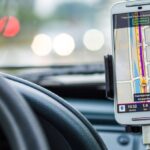In today’s fast-paced world, technology plays a pivotal role in simplifying various aspects of our daily lives. One such area that has seen significant innovation is navigation tools. With the rise of smartphone navigation apps, the question arises: Can these digital tools replace traditional navigation aids? Let’s delve into the pros and cons of both to determine whether smartphone navigation apps can truly replace their traditional counterparts.
**The Rise of Smartphone Navigation Apps**
The advent of smartphone navigation apps has revolutionized the way we navigate our world. With just a few taps on our smartphones, we can access real-time traffic updates, alternative routes, and detailed maps. Gone are the days of fumbling with paper maps or relying on bulky GPS devices. Smartphone navigation apps offer convenience, efficiency, and accuracy in a compact, handheld device.
**Advantages of Smartphone Navigation Apps**
One of the key advantages of smartphone navigation apps is their real-time updates. These apps can provide live traffic information, accidents, road closures, and construction delays, allowing users to adjust their routes accordingly. Additionally, smartphone navigation apps often offer multiple route options, taking into account factors such as traffic congestion and estimated arrival times. This flexibility ensures that users can choose the most efficient route to their destination.
Another major advantage of smartphone navigation apps is their user-friendly interface. These apps are designed to be intuitive and easy to navigate, making them accessible to users of all ages and technological proficiency levels. With features like voice-guided navigation and automatic re-routing, smartphone navigation apps provide a seamless navigation experience for users.
**Limitations of Smartphone Navigation Apps**
Despite their many advantages, smartphone navigation apps are not without their limitations. One of the primary concerns with these apps is their reliance on a stable internet connection. In areas with poor network coverage or during road trips through remote locations, smartphone navigation apps may struggle to provide accurate and up-to-date information. This can be a significant drawback for users who rely heavily on navigation tools for their daily commute or travel.
Moreover, smartphone navigation apps can be a drain on battery life, especially during long journeys. Constant use of GPS, data connectivity, and screen display can quickly deplete a smartphone’s battery, leaving users stranded without a navigation tool. This dependency on battery power can be a major drawback, particularly in emergency situations or when traveling to unfamiliar destinations.
**Traditional Navigation Tools: A Timeless Alternative**
While smartphone navigation apps offer convenience and modern features, traditional navigation tools like paper maps, compasses, and physical road signs still hold value in certain situations. These tools do not require an internet connection or battery power, making them reliable options for off-the-grid adventures or emergencies.
**Can Smartphone Navigation Apps Replace Traditional Tools?**
The debate over whether smartphone navigation apps can completely replace traditional tools is ongoing. While smartphone navigation apps offer unparalleled convenience, real-time updates, and user-friendly interfaces, they are not without their limitations. Traditional navigation tools, on the other hand, provide a reliable backup option in situations where digital tools may fail.
**In Summary**
Smartphone navigation apps have undoubtedly transformed the way we navigate our world. While these digital tools offer convenience, real-time updates, and user-friendly interfaces, they may not be able to fully replace traditional navigation aids. Both smartphone navigation apps and traditional tools have their own set of advantages and limitations, making them complementary options for users depending on their specific needs and circumstances. As technology continues to evolve, the future of navigation tools remains dynamic, with room for both digital innovation and timeless navigation methods.





